What Happened to Real Jeans? Why Most Denim Today Isn’t Cotton—And Why That Matters (Especially for Kids)
When you pull your toddler’s “denim” jeggings out of the laundry and see the tag, it might surprise you: 72% cotton, 26% polyester, 2% spandex. Weren’t jeans supposed to be cotton? In this post, we’ll explore how kids’ jeans have changed, why so many now contain synthetics, and what that means for your family’s comfort and the planet.
Remember When Jeans Were Just Cotton?
Not so long ago, jeans were synonymous with rugged 100% cotton denim. Many of us parents grew up in stiff Levi’s or Wranglers that we had to break in over time. Those classic jeans were heavy-duty and made entirely of cotton twill. Today, however, finding children’s jeans that are pure cotton is surprisingly rare.
“Most jeans people buy today are no longer 100% cotton.” They’re often 95% cotton (or less) with the rest made of elastane (spandex) – essentially rubbery plastic. In kids’ denim especially, brands now routinely blend cotton with synthetic fibers for stretch.
In fact, jeans that don’t stretch have become niche. A recent Washington Post piece noted that modern jeans are “softer, thinner...and stretchy” – more comfy, yes, but also “one of the most polluting... items in your closet.” That change from the all-cotton blues of decades past to today’s stretchy denim has major implications.
So what changed? In short: our preferences. As casual leggings and athleisure took over, we all got used to clothes that move and flex. Denim companies responded by weaving in elastane (a.k.a. spandex/Lycra) and sometimes polyester to give jeans a stretchy, sweatpants-like comfort. By the late 2010s, stretch denim was standard for most kids’ jeans (and many adult ones). “Real denim” (rigid cotton) became a special category rather than the default.
Stretchy Jeans Everywhere: What Are They Made Of?
Take a peek at the fabric labels next time you shop for kids’ jeans. You’ll likely see something like “98% Cotton, 2% Elastane” or even blends with polyester. Here are a few real examples from popular brands’ kids lines (fabric content can vary by style):
-
Old Navy: “Built-In Flex” boys’ jeans – 98% cotton, 2% spandex (Skinny Built-In Flex Jeans for Boys - Old Navy - Gap) (marketed for extra comfort). Their high-stretch 360° Stretch jeans go further, with as little as 81% cotton, 12% recycled polyester, 5% recycled cotton, 2% spandex (Slim 360° Stretch Jeans for Boys - Old Navy - Gap) in one style.
-
Gap Kids: “Super Skinny” jeans – about 67% cotton, 27% polyester, 5% recycled cotton, 1% elastane (Kids Mid Rise Super Skinny Jeans - Gap) in one version. (Gap also offers a special 100% organic cotton jean, which we’ll get to later.)
-
Levi’s Kids: “511 Performance” slim jeans – 53–54% cotton, ~23% viscose, ~22% polyester, 1–2% elastane (Levi's® Kids' 511™ Soft Performance Jeans | Nordstrom) (Levi's Boys' 511 Slim Fit Performance Jeans, Basil Sky - Amazon.com) (blending cotton with rayon and poly for softness and moisture-wicking). On the other hand, Levi’s classic “505” kids’ jeans can still be found in 100% cotton non-stretch denim (505™ Regular Fit Toddler Boys Jeans 2t-4t - Dark Wash | Levi's® US) – a nod to the old-school approach.
-
Zara Baby: Relaxed-fit baby jeans – around 66–68% cotton, ~26–30% polyester, 3–4% viscose, 1–2% elastane in one style (Zara Baby Boys Basic Relaxed-Fit Jeans Elastic Waist Size 2-3 Years) (Zara Jeans 74 cm | 6682 - Kidre). Yes, that’s nearly one-third plastic fibers in a baby jean! Zara often blends multiple fibers to make toddler denim extra soft and easy to pull on.
-
H&M Kids: “Comfort Stretch” slim jeans – 81% cotton, 17% polyester, 2% elastane (Comfort Stretch Slim Fit Jeans - Shopee Malaysia). H&M has some rigid denim options for older kids, but many of their toddler and kid jeans use poly and spandex for stretch.
As you can see, pure cotton jeans for kids have become the exception rather than the rule. Most “denim” kidswear today is actually a cotton-synthetic blend. Even when the tag says 95% or 98% cotton, that last few percent of spandex makes a big difference in feel. And if you see polyester or viscose on the label, the jeans might be significantly lighter and stretchier (more like jeggings).
Marketing Lingo: “Comfy Stretch” and “Easy Fit” – What Do They Mean?
Why do brands add these synthetics? One word: comfort. And they’re not shy about selling it. Browse any kids’ clothing site and you’ll see lots of friendly phrases aimed at parents:
-
Old Navy touts “Built-In Flex” and “Built-In Tough” in their jeans, promising freedom of movement and durability (Skinny Built-In Flex Jeans for Boys - Old Navy - Gap). Translation: a bit of elastane so your active kid can bend and play easily (and a touch of nylon/poly in some cases for strength).
-
Many stores use terms like “super comfy stretch denim” or “easy fit waistband.” For example, Carter’s labels some toddler jeans “super comfy stretch” so parents know the fabric won’t restrict a wiggly toddler (Toddler Dark Blue Wash Super Skinny-Leg Jeans - Carter's). Target’s Cat & Jack jeans emphasize “easy pull-on” styles with elastic waists and stretch for diaper changes and potty training ease (Toddler Boys' Pull-on Straight Fit Jeans - Cat & Jack - Target).
-
“Flex”, “Stretch”, “Easy Move”, “Comfort Fit” – these all signal that the jeans have elastic fibers. Even higher-end kids’ lines will say things like “made from comfy stretch denim” (Joe's Jeans Kids' Brixton Ripped Slim Straight Leg Jeans | Nordstrom) as a selling point.
-
Sometimes the stretch is framed as a premium feature: Levi’s uses “Performance denim” for the 511 line, suggesting high-tech benefits (they mention moisture-wicking and temperature regulation) which come from the polyester/viscose added (Levi's® Kids' 511™ Soft Performance Jeans | Nordstrom). It sounds sporty and advanced.
For parents, this marketing focuses on making our lives easier: Jeans that won’t cause morning dressing battles, that kids can run and climb in, that might even last through a growth spurt because there’s a little “give.” Who doesn’t want that, right?
And to be fair, stretch can help with fit – especially if your child is between sizes or still in diapers. A rigid 100% cotton toddler jean in a slim cut might be hard to pull over a diaper or might dig in at the waist. Stretchy fabric and elastic waists solve that. Brands know parents value anything labeled “comfy”, “soft,” or “easy.”
However, those friendly terms can mask what’s really going on with the fabric. “Comfy stretch denim” basically means cotton mixed with plastic (elastic polymer fibers). Easy-care often means there’s polyester (since poly doesn’t wrinkle or shrink like cotton). Understanding these euphemisms helps you decode clothing labels and make informed choices.
Comfort vs. Durability: The Trade-Offs
There’s no denying that a little stretch makes jeans more immediately comfortable. Kids (and adults) appreciate not having stiff pants. Here are some pros and cons of the stretch-denim trend:
-
👍 Pro: Easier movement and fit. Stretchy jeans allow kids to squat, climb, and play with less restriction. The material flexes with them. This is especially helpful for very active kids or those with sensory sensitivities who reject stiff fabrics. A bit of spandex also means jeans snap back into shape and can handle tumbles without tearing as easily in the short term.
-
👍 Pro: No “break-in” period. Unlike old rigid jeans that might have been rough or tight at first, stretch denim tends to be soft right off the rack. Many parents enjoy that buttery-soft feel when you first touch those jeggings or stretchy skinnies. It’s kid-friendly from day one.
-
**👎 Con: They don’t last as long. The flip side of softness is often reduced durability. Traditional 100% cotton denim is tough – think of those hand-me-down Levi’s that lasted years. When you add elastic fibers, the fabric can wear out or “bag out” faster. The Washington Post notes today’s stretch jeans *“fall apart far more quickly than their predecessors. The knees in stretch jeans, for example, often sag or thin out after a season of play. Have you noticed the little white elastic threads poking out of worn knees or waistbands? That’s the spandex breaking. Once that happens, the jeans lose their shape.
-
👎 Con: High cost-per-wear. Because of that quicker wear-and-tear, you might be replacing jeans more often. George Hahn, a denim enthusiast, points out that when stretch jeans stop stretching, they’re effectively done – and that yields a higher cost per wear (and more waste) than sturdy cotton jeans. A pair of well-made 100% cotton jeans could last through multiple kids (or be resold/thrifted), whereas many stretch jeans might not survive long enough to be passed down.
-
👎 Con: Potential fit issues over time. Ever had jeans that fit great at first, then gradually got baggy or misshapen? That’s often the elastane wearing out or the polyester fabric warping after many washes. Pure cotton can shrink or tighten, but it can also be shrunken back or re-shaped (and tends to mold to the body with wear, which many consider a feature). Stretch blends, when they degrade, often just lose their recovery – meaning they won’t snap back and just stay saggy.
In short, stretchy denim trades some longevity for comfort. For growing kids, you might think, “Well, they’ll outgrow them anyway.” That’s true in many cases. But if you’re hoping to use those jeans for younger siblings or to resell/donate them, it’s something to consider. Additionally, the environmental cost (more frequent replacements = more resources used and tossed) is a concern we’ll discuss later.
Why Synthetics in Denim Can Be a Problem
Comfort is great – but what about the cost of all these synthetic (plastic) fibers in our clothes? Here are some of the downsides of the move away from cotton in denim:
Microplastic Pollution from Washing
One big issue with polyester and similar fibers is that they shed microplastics in the wash. Every time you launder those poly-blend or spandex jeans, tiny fibers break off and flow out with the wastewater. Unlike cotton lint, these synthetic microfibers do not biodegrade and can persist in the environment.
Scientists have found that even our beloved jeans are contributing to ocean pollution. A study in 2020 found indigo denim microfibers all over remote Arctic and marine environments – likely from washing. And broadly, **about 35% of microplastics in the ocean come from laundering synthetic textiles like polyester. That means your washing machine is a notable source of plastic pollution!
Did you know? Washing clothes releases around 500,000 tons of microfibers into the ocean each year – the equivalent of 50 billion plastic bottles. Choosing less synthetic clothing (or washing in filtered laundry bags) can help reduce this.
With kids, we wash their clothes A LOT (hello, grass stains and food spills!). If those clothes are full of polyester, that’s a continuous stream of microplastics. 100% cotton denim, by contrast, sheds fibers that are biodegradable. Cotton will break down naturally over time, whereas a polyester fiber could persist for centuries.
Not Biodegradable and Landfill Issues
Speaking of centuries, consider what happens when the clothes are truly worn out. If you toss a pair of mostly-polyester jeans in the trash, they’ll sit in a landfill basically forever in human terms. Polyester can take over 200 years to biodegrade. Even elastane (a type of polyurethane) is not readily biodegradable.
Cotton, on the other hand, is plant-based and compostable. A cotton garment can break down in a matter of months under the right conditions. One source notes that 100% cotton fabric can decompose in 5 months or less in active conditions. Of course, if jeans are dyed and finished heavily it might slow it, but the difference is stark.
If sustainability is on your mind, choosing higher cotton content is generally better. (Granted, cotton farming has its own environmental impacts like water use, but innovations in organic and regenerative cotton are improving. At least cotton doesn’t contribute to plastic pollution.)
Odor and Freshness
Parents often notice that polyester gym clothes get stinky fast – but did you know the same applies to any polyester in everyday clothing? Synthetic blends in jeans can trap odors more than cotton does. Bacteria that cause odor tend to grow better on polyester fabrics, making smells harder to wash.
In fact, research has shown that after sweating, polyester clothes smell worse than cotton because the synthetic fibers hang onto those smelly microbes. Cotton is breathable and releases dirt and odors more easily in the wash. This might not be a huge issue for a lightly worn pair of toddler jeans, but think about potty training days or active teens. Those stretchy school uniform pants with high poly content might start to get a permanent funk that you can’t quite wash away.
For young kids, another odor-related point: synthetic fabrics aren’t as breathable, so they can cause kids to sweat more in the first place. If your toddler runs around in poly-blend skinny jeans on a hot day, they might get sweatier and then the fabric holds that sweat...leading to a clammy, smelly kid. Cotton denim, especially lighter weights, will breathe better and may keep them cooler and drier.
Skin Sensitivities and Comfort Concerns
Many parents prefer cotton clothing for infants and kids with sensitive skin, and there’s good reason. Natural fibers tend to be gentler on the skin. Synthetic fibers (polyester, nylon, spandex, etc.) don’t “breathe” as well, which means moisture can get trapped against the skin. This can lead to irritation, heat rash, or just general itchiness. Dermatologists note that you’re more likely to get contact dermatitis (a rash) from synthetic clothes like polyester or spandex than from cotton. The lack of airflow and extra sweat can aggravate eczema in some children.
Elastane itself isn’t known as a major allergen, but tight stretchy garments might rub or chafe more if they fit snugly. Also, blended fabrics often undergo chemical treatments (dyes, wrinkle-resistant finishes, etc.) which can cause reactions. Tight, non-breathable pants + sweat + possible chemical residue = a recipe for potential skin irritation on a sensitive kid.
For toddlers still in diapers or newly potty-trained, consider that plastic fibers might also hold onto urine odors more and potentially irritate if the child is wet. Many training pants are cotton for this reason. If a child has a minor accident in polyester-blend leggings, it might be less forgiving than in cotton jeans which at least absorb moisture away from the skin.
None of this is to scare you that “polyester is toxic” (though some blogs take that angle). It’s more about comfort and common sense: if your child has skin issues or you live in a hot climate, leaning towards cotton-rich clothing (including jeans) is likely better for their comfort and skin health. Plenty of kids wear stretch denim with no issue, but if you’re troubleshooting rashes or itchiness, checking the fabric content can be eye-opening.
When “Sustainable” Isn’t So Sustainable
A quick note on greenwashing: Some brands market their stretch denim as sustainable because they use recycled polyester or a portion of organic cotton. While those are good steps, be aware that recycled polyester is still polyester – it will still shed microplastics and resist biodegrading. And a pair of jeans that is 70% cotton, 29% recycled polyester, 1% spandex is still 30% plastic. Calling it “conscious” or “eco” (as fast-fashion brands often do) can be a bit misleading.
Also, the presence of spandex in fabric makes recycling the garment at end-of-life much harder. Pure cotton can be recycled or downcycled more easily into things like insulation or new yarn. Blends? Much trickier (though researchers are working on methods to separate cotton from polyester in blends). So, from a circular economy perspective, 100% cotton is preferable.
The takeaway: don’t let buzzwords fool you. Even if the tag says “20% recycled content” or “organic cotton blend,” check what the other fibers are. An organic cotton jean that also has spandex and polyester isn’t as eco-friendly as a jean that’s 100% organic cotton. It’s great that brands are moving to organic cotton and recycled poly, but the best for sustainability is still a mostly-natural fiber product that lasts a long time.
The Case for Real Denim (100% Cotton) – Long-Term Value
Given all the above, you might be thinking: Why aren’t all kids’ jeans made of 100% cotton, at least for everyday wear? It often comes down to cost and consumer demand. Stretch blends are sometimes cheaper to produce (polyester is inexpensive compared to high-quality cotton), and they cater to our desire for softness and stretch. Also, many parents just don’t know this changed – jeans still sound like a cotton item, unless you check the fine print.
But there’s a growing appreciation for going “back to basics” with denim. Here’s why real, all-cotton denim can be great, especially for kids:
-
Breathability & Comfort: Cotton is a breathable fiber that allows airflow and wicks moisture. On a warm day, cotton jeans will generally feel cooler than poly-blends. They also soften with each wash and wear, breaking in to your child’s body. You might recall how your old jeans got more comfortable over time – that still happens! Authentic denim aficionados love that “sturdy yet softening with each wear” quality that only cotton can produce. Your kid’s 100% cotton jeans will gradually become uniquely theirs, shaping to their movements and developing natural fade marks (way cooler than pre-fabricated ones).
-
No Surprises in Care: Cotton is easy to wash (even hot water is fine if needed) and you don’t have to worry about high heat damaging stretch fibers. If a cotton jean gets a hole, you can patch it or iron-on a cool patch without the area puckering from spandex. And unlike synthetics, cotton doesn’t melt – I’ve heard horror stories of pants that got a bit too close to a campfire and literally melted because they were mostly polyester! With cotton, worst case it might singe, not melt onto skin.
-
Ease of Repair: Kids rip knees; it’s inevitable. With a thick cotton denim, you can sew on a fun knee patch or even have a tailor reinforce or darn them. Because the fabric is stable (not stretchy), patches hold well. With stretchy jeans, repairs are harder – a rigid patch on a stretchy area can itself tear or feel uncomfortable. I’ve mended both types and the 100% cotton is far easier to fix. That means you can extend the life of those favorite jeans with a bit of DIY, getting more wear for your money.
-
Skin-Friendliness: As discussed, cotton is generally the safest bet for sensitive skin. Organic cotton, in particular, can be even softer and is grown with fewer chemicals (so likely has fewer residue irritants). But even conventional cotton denim typically undergoes several washes in production (stone washing, etc.), so by the time it’s on your kid, it’s mostly just cotton fiber with minimal chemicals left. Many parents find their kids are comfier and less itchy in natural fibers.
-
“Grow with me” potential: One neat thing about sturdy cotton jeans – if they’re initially a bit big, you can cuff them and they’ll still look cute (hello, 1950s cuffed jean vibes). As the child grows, uncuff them. Because the fabric holds shape, a slightly looser fit still looks intentional (whereas stretch jeggings that are too loose just look baggy). Also, if you have basic sewing skills, letting out a hem or taking in a waist on cotton denim is straightforward. So a quality pair could last longer through size changes.
-
Better Aging: Instead of falling apart, good cotton denim ages gracefully. The knees might fade or even rip, but some folks consider that “distressed” look fashionable. There’s a reason ripped real-denim jeans are a style trend – they just have a cooler look than threadbare stretchy jeans. For kids, you might not care about fashion, but you might be able to get away with a patched or artfully distressed pair of cotton jeans at playtime far longer than a synthetic pair that just went threadbare.
Now, it’s worth acknowledging a 100% cotton jean will often feel stiffer at first than a stretch one. But many kids’ brands do pre-wash them for softness. And kids themselves might not mind – especially younger ones who don’t know the difference. If you get them used to the idea that jeans can be a little stiff but will soften, it might not be an issue. Some parents even report their kids prefer the feel of thicker cotton denim for the same reason we used to: it can feel like protective “armor” and has a cool factor.
Tips: How Parents Can Spot Synthetic-Heavy Jeans (and Avoid Greenwashing)
Finally, let’s get practical. How can you tell what you’re buying? Here are some tips to choose truly cotton-rich denim for your kiddos:
1. Read the Fabric Label: This sounds obvious, but it’s easy to forget when shopping online or quickly in-store. By law (in the US) clothing must have a content label. Look for “100% cotton” or at least a high percentage of cotton. If it lists materials like elastane (spandex), polyester, viscose, nylon etc., then it’s not all cotton. The higher those percentages, the more “plastic” in the pants. As we saw, some baby jeans were only 66% cotton – a detail easy to miss if you don’t check the tag.
2. Feel and Stretch Test: If shopping in person, do the old-school feel test. Authentic denim has a certain weight and slight roughness (it can be soft if washed, but not slippery or overly stretchy). Give the fabric a firm tug widthwise: does it stretch significantly? Real 100% cotton denim will have minimal give (aside from maybe a little if it’s a looser weave). If it stretches like a rubber band, it’s definitely got spandex. One expert tip: *“If there’s no label, stretch the fabric – if it gives a lot, it’s probably not a [rigid] jean. Basically, stretchy = synthetic present.
3. Look for Keywords: When shopping online, in the item description look for words like “stretch,” “flex,” or on the flip side, words like “rigid denim,” “non-stretch,” or “100% cotton.” Some sites let you filter by “fabric” or “sustainable materials” – though remember, “sustainable” might include recycled polyester. If in doubt, scroll to the product details/specifications section where materials are listed. If an online listing doesn’t say the material at all, that’s a flag – they almost always mention stretch if it’s there (because it’s a selling point). You can also check if the site has a Q&A or reviews; often another parent might mention “These jeans are very stretchy” or “more like jeggings than jeans” which is a clue.
4. Don’t Be Swayed by “Conscious” Collections Alone: If a brand markets a line as eco-friendly (H&M Conscious, Zara Join Life, etc.), it does not automatically mean the item is natural fibers. Often it means they used organic cotton or recycled poly, etc. Always double-check the actual percentages. For instance, H&M Conscious girls’ jeans might still be 79% cotton, 20% recycled poly, 1% elastane – better than virgin poly, but still plastic-heavy. Look for high cotton percentages even within those collections.
5. Check for Lining or Hidden Materials: Some toddler jeans are lined with poly fleece or have polyester waistbands for comfort. That will be on the label too. If you want to avoid synthetics, opt for unlined jeans or those with cotton linings. (Or remove the lining if you’re crafty and it’s not integral.)
6. Know the Buzzwords vs Reality: “Washwell program” (Gap) or “WaterLess technology” (Levi’s) tells you about water-saving dye processes, but not about fiber content. “Recycled fibers” could mean recycled cotton (great!) or recycled polyester (okay, but still plastic). “Organic cotton” is fantastic, but an “organic cotton stretch jean” is still part spandex. So read beyond the headline of sustainability features.
7. Educate the Kids (if they’re old enough): This is more about avoiding battles – if your older child is used to jeggings, explain why the new cotton jeans feel different and that it’s a good thing. Make it fun – “these are real jeans, like what Mom/Dad wore as a kid – they’re gonna fade cool and last longer!” Sometimes a child might complain if something isn’t as stretchy, so gradually introduce more rigid jeans for short periods until they get used to them. Pairing them with a favorite soft t-shirt or making sure the fit is reasonably loose can help.
At the end of the day, the goal isn’t to make anyone feel bad for owning stretch denim (we all do!) or to say you must buy 100% cotton everything. It’s about being informed. Now that you know jeans aren’t automatically cotton, you can choose what’s best for your child and values. Maybe you’ll opt for mostly-cotton jeans for school and play, and keep one pair of super-stretch jeggings for long car trips or dress-up days – totally fine! Or perhaps you’ll start seeking out more durable denim to hand down between siblings, saving money and waste in the long run. Even small shifts help.
Optimistic Realism: The Future of Kids’ Denim
The good news is that awareness is growing. Consumers (like you, since you’re reading this!) are getting curious about fabric content. Brands are noticing some demand returning for “authentic denim.” For example, Levi’s has been reintroducing more rigid styles in adult lines, and companies are investing in better sustainable materials (like stretch fibers made from biodegradable sources – those could be a game changer in the future).
We can hope that the next few years bring more options where comfort and sustainability meet – perhaps jeans with natural stretch (there’s research into cotton weaving techniques and new plant-based elastic fibers). Some brands already blend cotton with Tencel (lyocell), a semi-synthetic from wood pulp, for softness instead of polyester – a step in the right direction since Tencel is biodegradable. Innovation is happening!
In the meantime, we as parents have the power to vote with our wallets. Choosing high-cotton, quality jeans for our kids sends a signal. It also teaches our children about the value of longer-lasting clothes. There’s something heartwarming about a kid having a pair of jeans that wears in and sticks with them through adventures – maybe even to be passed to a little sibling with their own new patches and stories to add.
Cotton denim has been around for 150+ years for a reason: it works. It’s hard to improve on Mother Nature’s design. So while stretch skinnies have their place, let’s not forget the beauty of real jeans. By knowing what to look for and why it matters, you can make the best choice for your child’s comfort, your values, and yes, even style (because a tiny tot in classic jeans is always adorable 😄).
And we’re excited to share that we’ve been working on our own contribution to the future of kids’ denim. Our Everyday Play Jean is made from 100% cotton denim, grown and milled in the U.S., and sewn with care in San Francisco. The fit is relaxed and easy to grow into—just roll the cuffs at first, and unroll them as those little legs get longer. Finished with our signature lemon patch pockets, these jeans are designed to bring a little joy to everyday getting dressed.
They’re a reminder that what we put on our kids can be thoughtful, playful, and made to last. We hope they’re worn often, loved hard, and handed down—patched and full of stories.


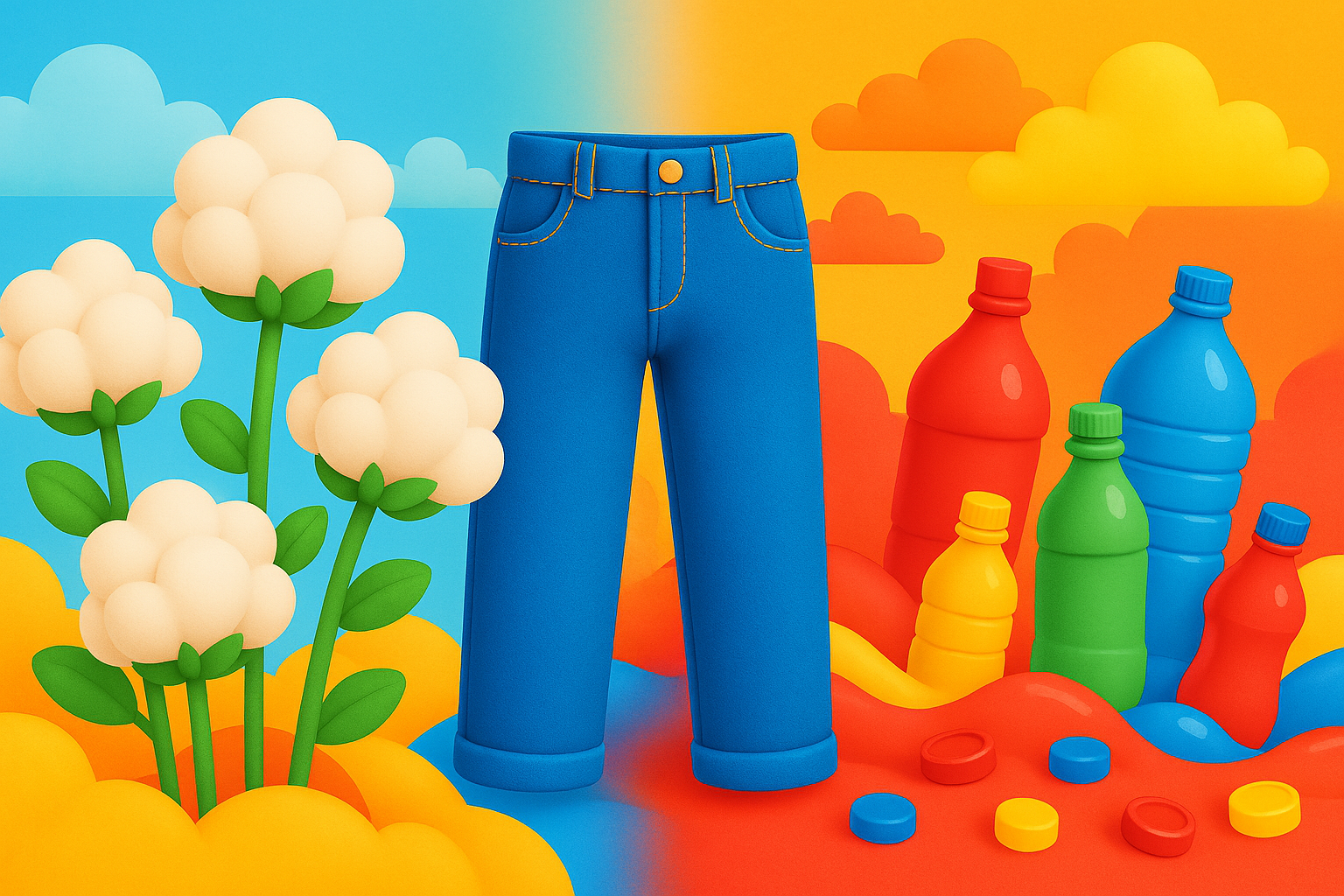
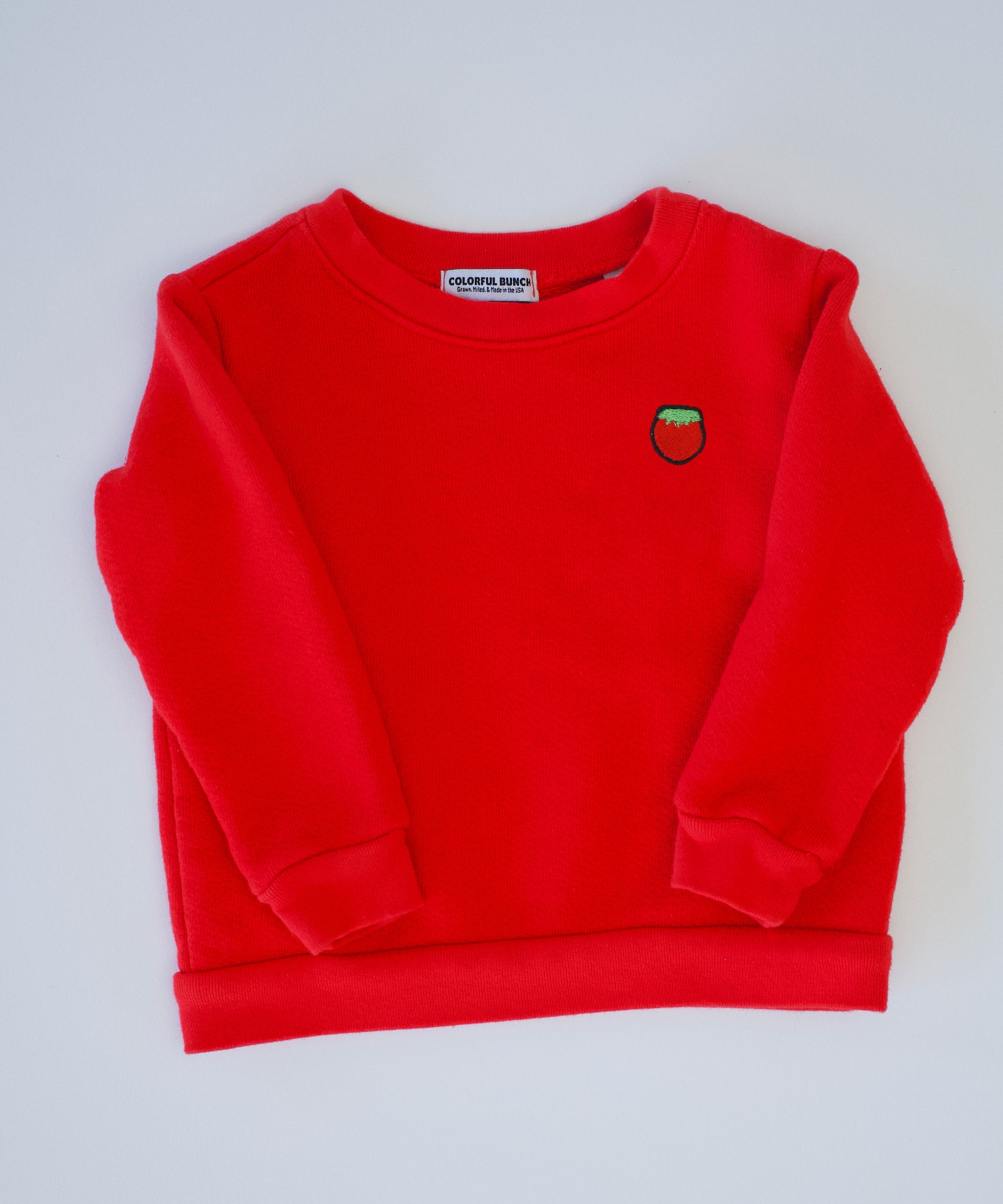

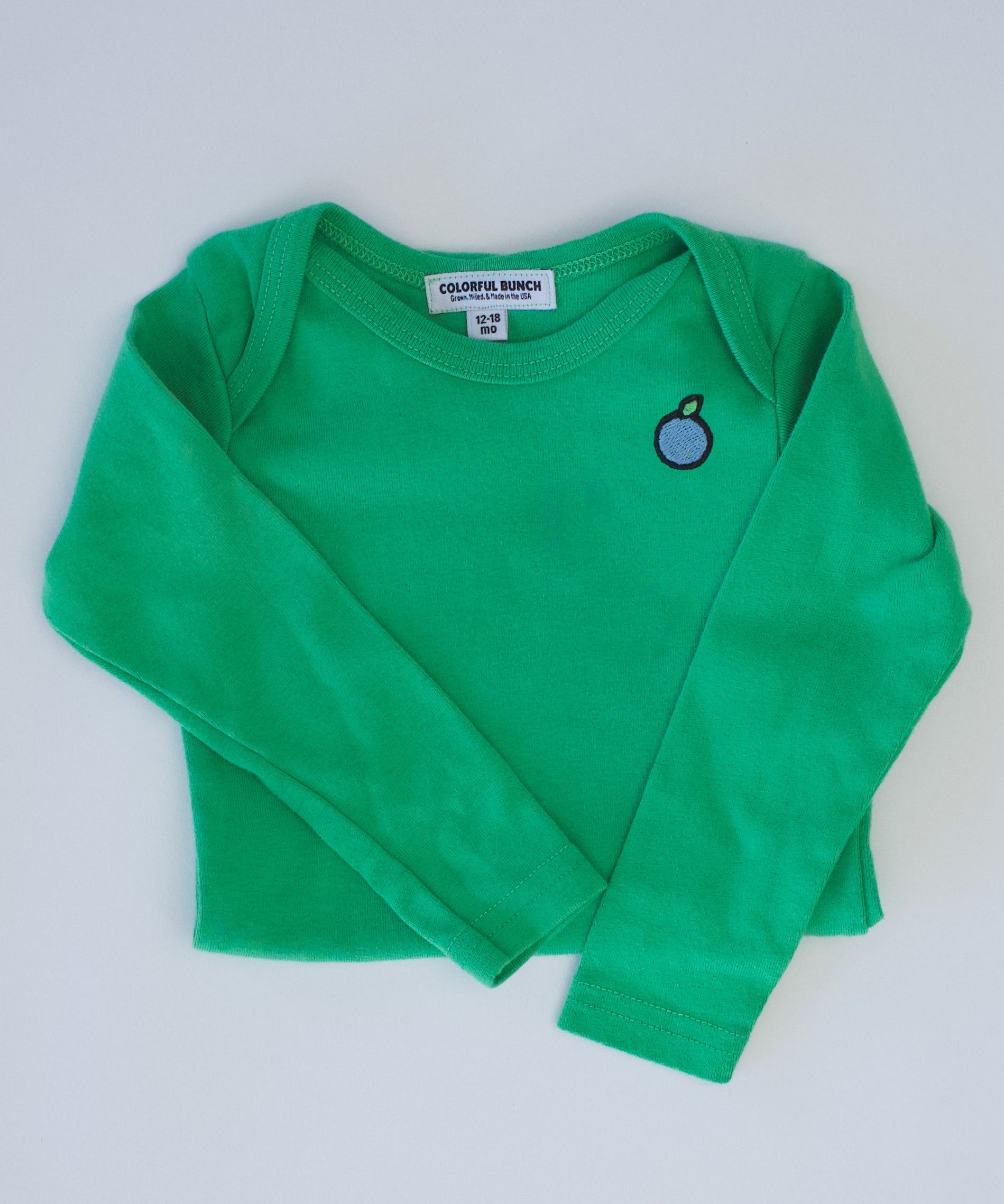
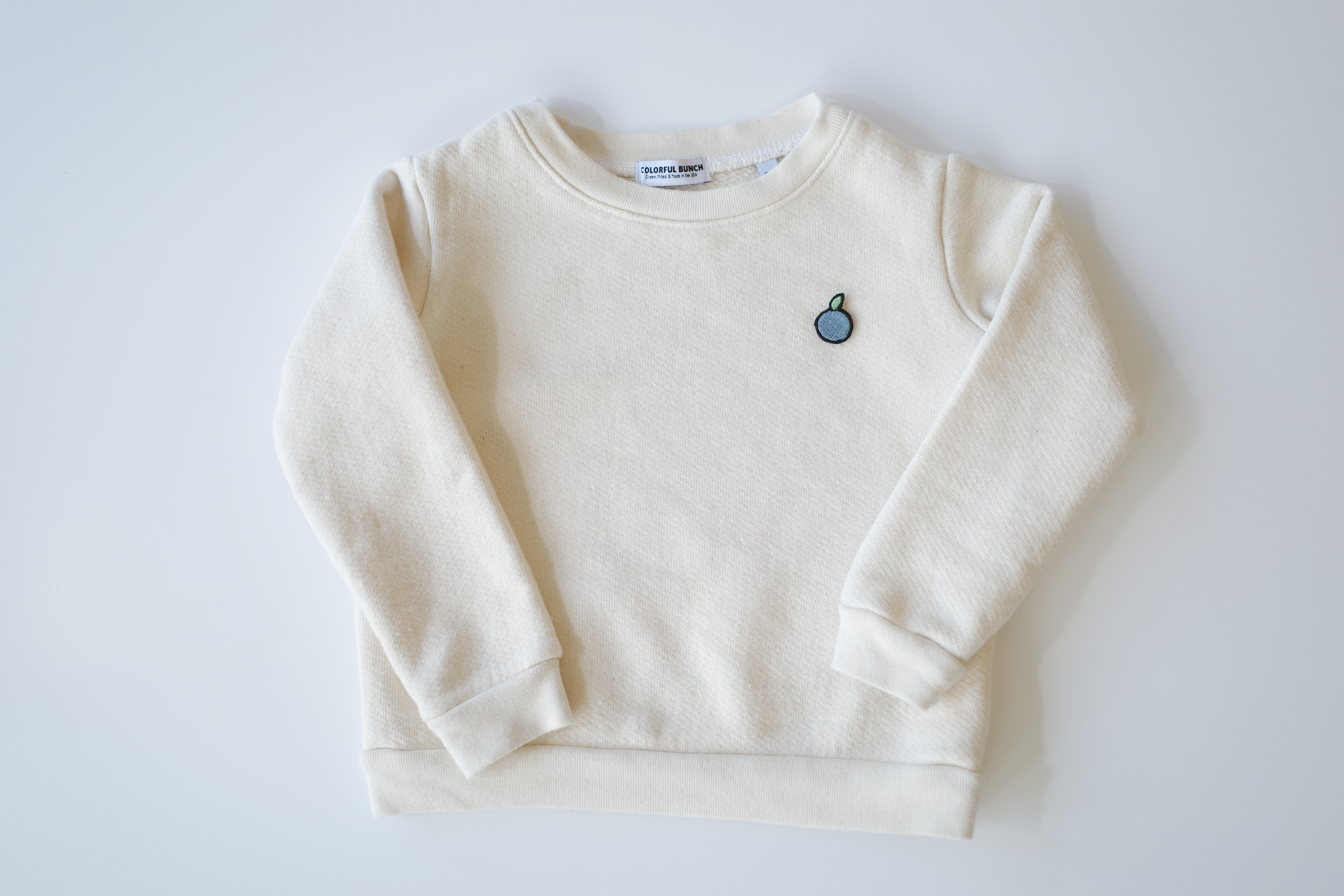
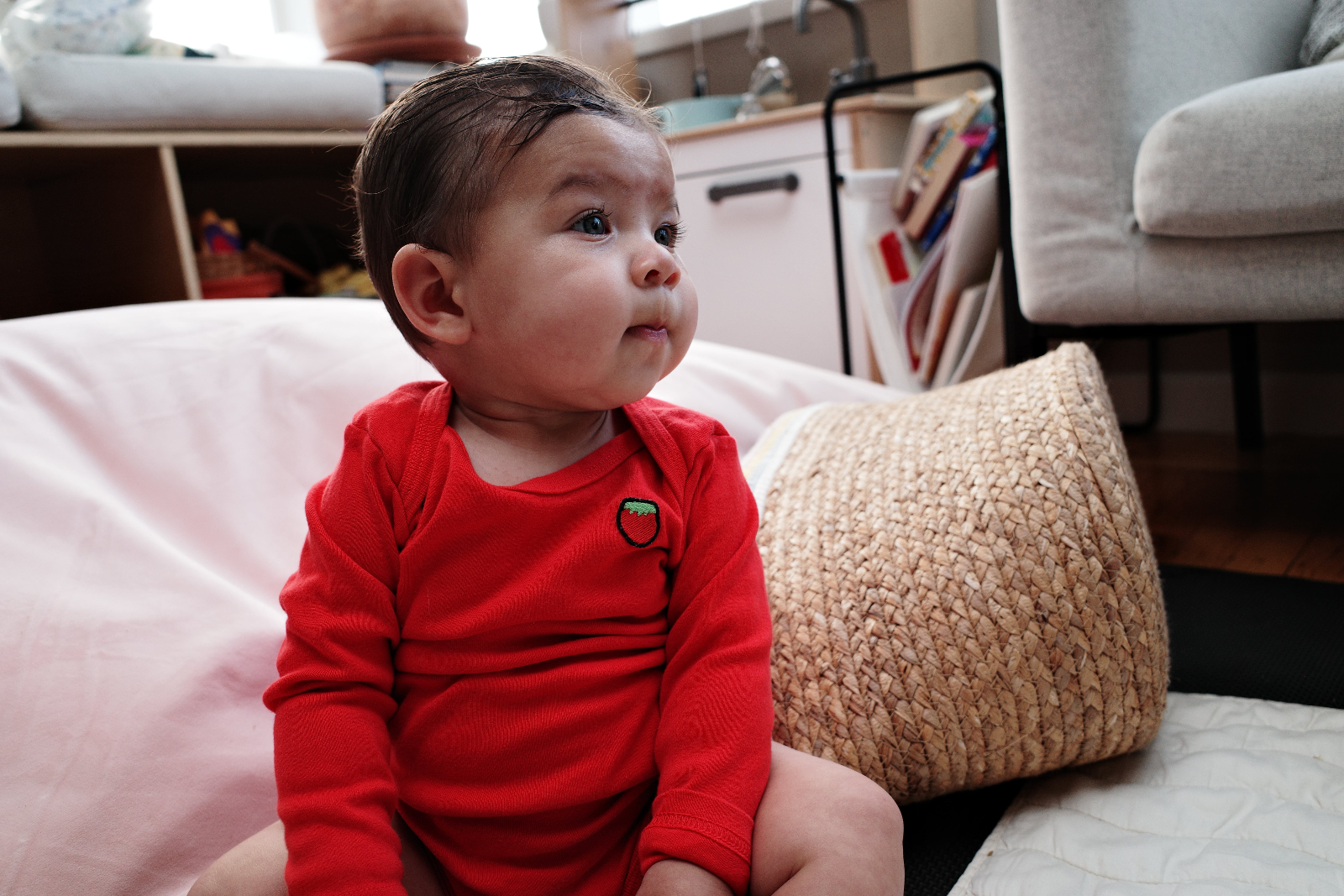
Leave a comment